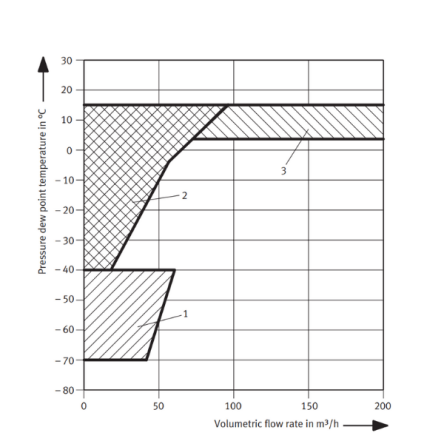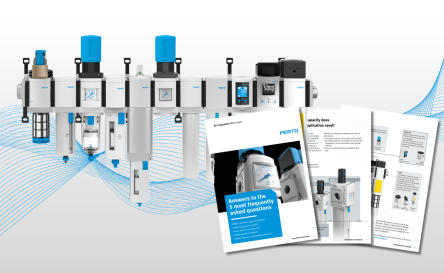
Types of compressed air dryers
In practice, three main procedures are used to dry compressed air: adsorption dryers, membrane air dryers, and refrigeration dryers (up to 1000 m³/h).
Each type is suited to specific areas of application, as outlined by Hoerbiger-Origa.
1. Adsorption dryer
2. Membrane air dryer
3. Refrigeration dryer up to 1000 m³/h
Want to learn more about compressed air preparation?
📘 Download our whitepaper: Answers to the 5 most frequently asked questions about air prep

Refrigeration dryers
Generally speaking, a refrigeration dryer should be placed downstream of each compressor. The air is cooled to just above freezing in a cooling unit, and the condensate that falls off is drained away. In order to save on energy costs, heat is exchanged between the cold dried air and the warm air that still needs to be dried. The pressure dew point is then approx. 3 °C. Since the safety margin to the pressure dew point needs to be 10 K, this is sufficient for systems whose operating temperature never drops below 13 °C.

Membrane air dryers
They lower the pressure dew point. Membrane air dryers from Festo lower the pressure dew point by 20 K, for example. The air flows longitudinally through a bundle of parallel, hollow fibres. During this process, water vapour diffuses because of a partial pressure drop from the inside of the fibres to the outside. The vapour is drained out using purge air. Due to the purge air, the maintenance-free dryer has a certain amount of constant bleed.

Adsorption dryers
They are used when pressure dew points of –70°C are required. The dryers use molecular forces to bond gas or vapour molecules to a drying agent. Since the drying agent is regenerative, two chambers are required: while drying takes place in one, in the other the drying agent has time for cold or warm regeneration. In devices with cold regeneration, such as those offered by Festo, some of the dried air is used to dry the adhesion agent. When warm regeneration is used, the water evaporates as heat is applied. The drying agent must be replaced regularly.
Inlet pressure and material considerations
In membrane and adsorption dryers, the higher the inlet pressure, the better the efficiency. The inlet pressure should therefore be as high as possible. In addition, a certain amount of caution is required with some connection materials. Hemp joints on piping, for example, are air-tight, but may still draw in water from the ambient air and channel it into the system.

Want to learn more about compressed air preparation?
📘 Download our whitepaper: “Answers to the 5 most frequently asked questions about air prep”
Download now